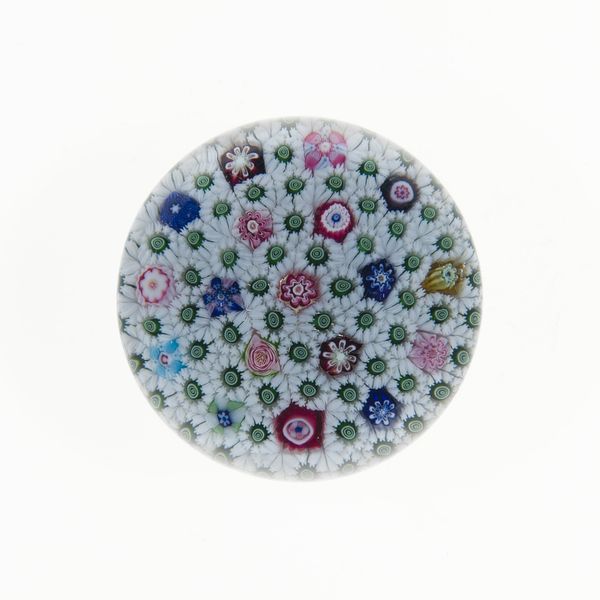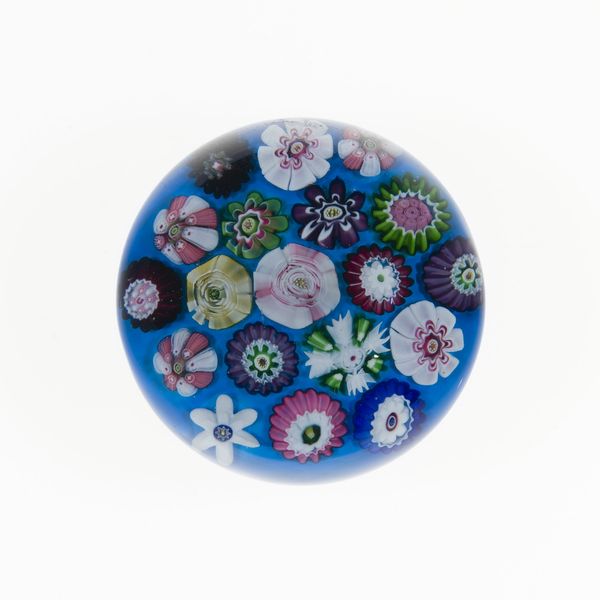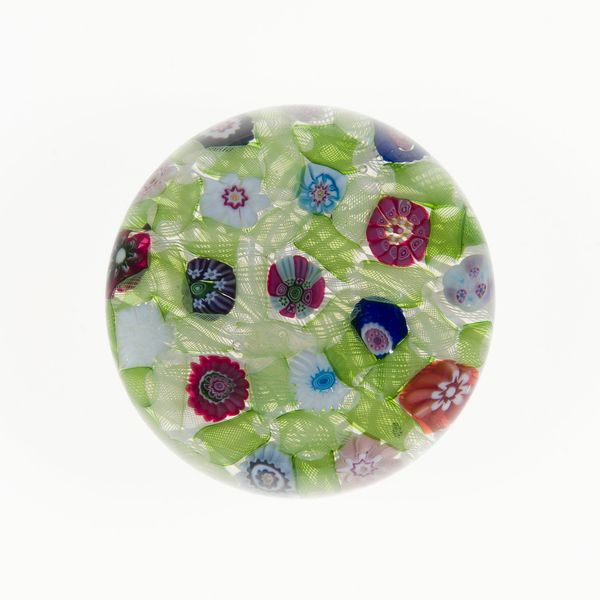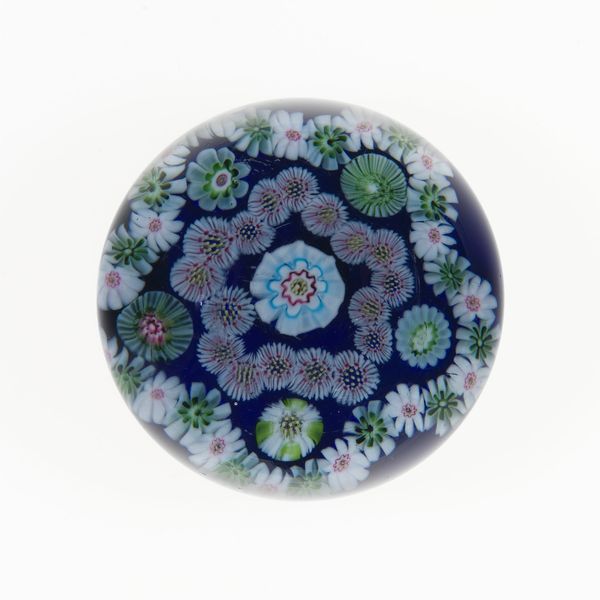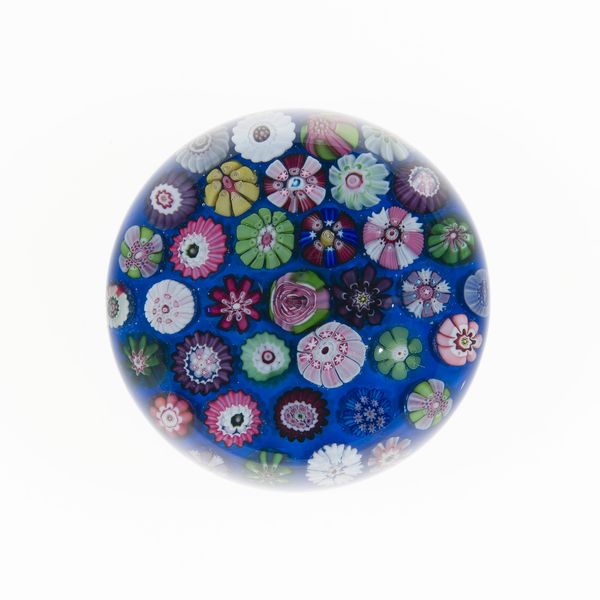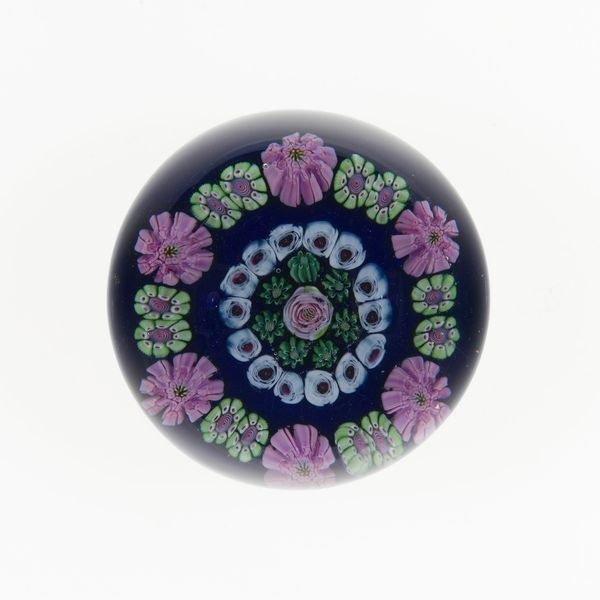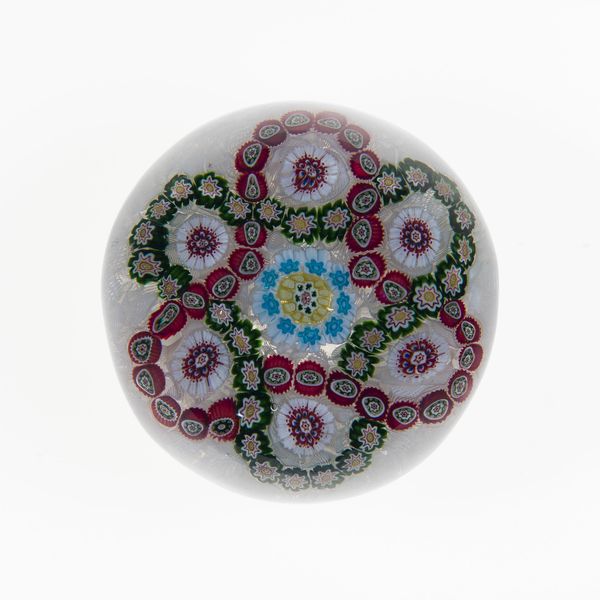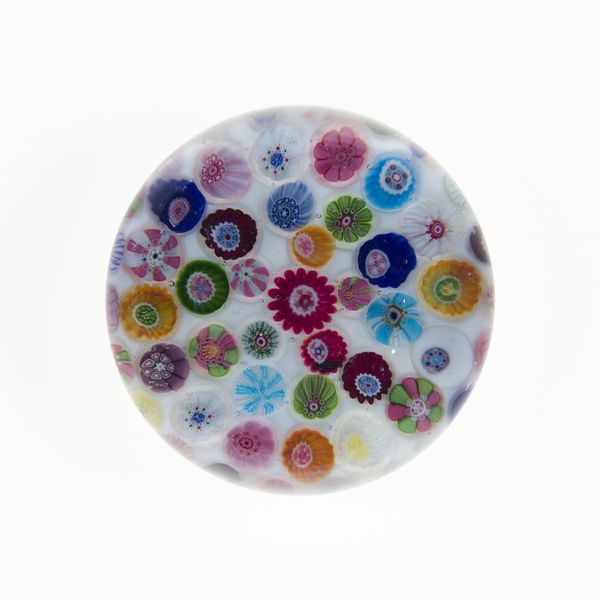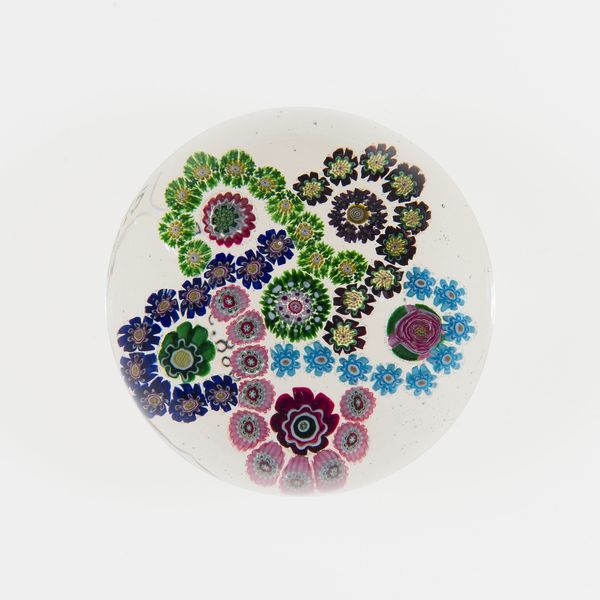
paper, glass
#
paper
#
glass
#
decorative-art
Dimensions: 2 3/4 in.
Copyright: Public Domain
This paperweight was made at the Clichy Glasshouse in France, sometime between 1837 and 1885. It's made from glass, of course, but that simple word conceals a world of expertise. Consider all that’s involved: the mastery of furnaces, the precise timing needed to introduce different colors, and the creation of individual glass canes – each a tiny, perfect flower. These were bundled together, heated, and then encased in molten clear glass. While the technique wasn't new, the scale of production was. These paperweights were luxury goods, made for a booming middle class with money to spend. Factories like Clichy became specialists in this kind of intricate work. Skilled labor was essential, but the glassmakers were also participating in an increasingly consumerist economy. Looking at this object, we can appreciate not only its beauty but also its place at the intersection of craft, industry, and commerce. It’s a reminder that even the most exquisite objects are rooted in social context.
Comments
No comments
Be the first to comment and join the conversation on the ultimate creative platform.


